Discover 35 hidden attractions, cool sights, and unusual things to do in Bremen (Germany). Don't miss out on these must-see attractions: Roland, City Hall, and Bremen Cathedral. Also, be sure to include Valentin submarine pens in your itinerary.
Below, you can find the list of the most amazing places you should visit in Bremen (Bremen).
Table of Contents
Roland

Emblematic statue built in 15th-century. The Bremen Roland is a statue of Roland, erected in 1404. It stands in the market square of Bremen, Germany, facing the cathedral, and shows Roland, paladin of the first Holy Roman Emperor Charlemagne and hero of the Battle of Roncevaux Pass. Roland is shown as protector of the city: his legendary sword is unsheathed, and his shield is emblazoned with the two-headed Imperial eagle.
The standing figure is 5.47 m tall, and stands on a 60 cm rostrum. A supporting column, crowned by a baldachin, brings the combined height to 10.21 m. The statue was carved in limestone from the Elm, and was commissioned by the city fathers to replace a wooden one burnt in 1366 by Prince-Archbishop Albert II. It confronts the church as a representation of city rights opposed to the territorial claims of the prince-archbishop.
The inscription on the shield reads: "vryheit do ik ju openbar / d’ karl vnd mēnich vorst vorwar / desser stede ghegheuen hat / des danket god’ is mī radt"
This translates in English to: "Freedom I do manifest to you / which Karl and many noblemen indeed / have given to this place. / Thank God for this is my advice."
Statues of Roland appear in numerous cities of the former Holy Roman Empire, as emblems of city liberties, Stadtrechte. The Roland statue at Bremen is the oldest surviving example. From Bremen the symbol of civic liberty and freedom spread to other cities and has become a symbol of the new Europe. Since 1973, it is protected by the monument protection act. In July 2004, along with the town hall, the statue was added to the list of UNESCO World Heritage Sites.[1]
Address: Am Markt, 28195 Bremen (Mitte)
City Hall
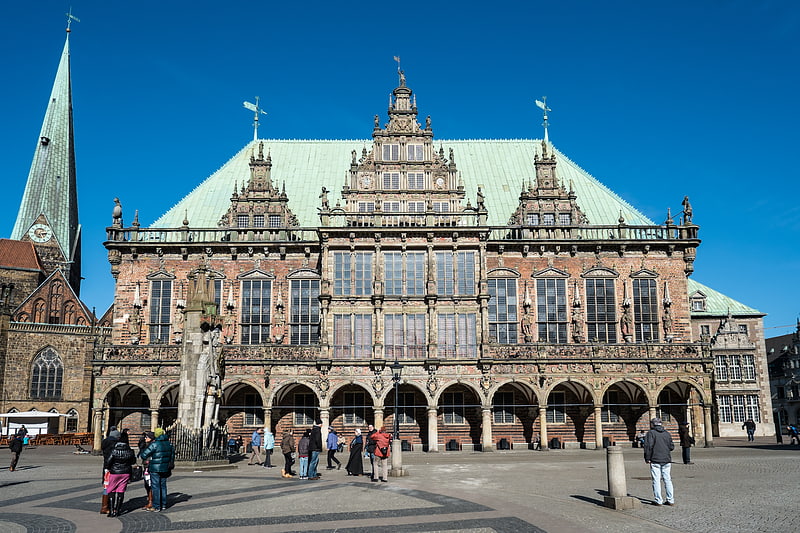
Also known as: Bremer Rathaus
600-year-old town hall with a restaurant. The Bremen City Hall is the seat of the President of the Senate and Mayor of the Free Hanseatic City of Bremen. It is one of the most important examples of Brick Gothic and Weser Renaissance architecture in Europe. Since 1973, it has been a protected historical building. In July 2004, along with the Bremen Roland statue, the building was added to the list of UNESCO World Heritage Sites.[2]
Address: Am Markt 21, 28195 Bremen (Mitte)
Bremen Cathedral
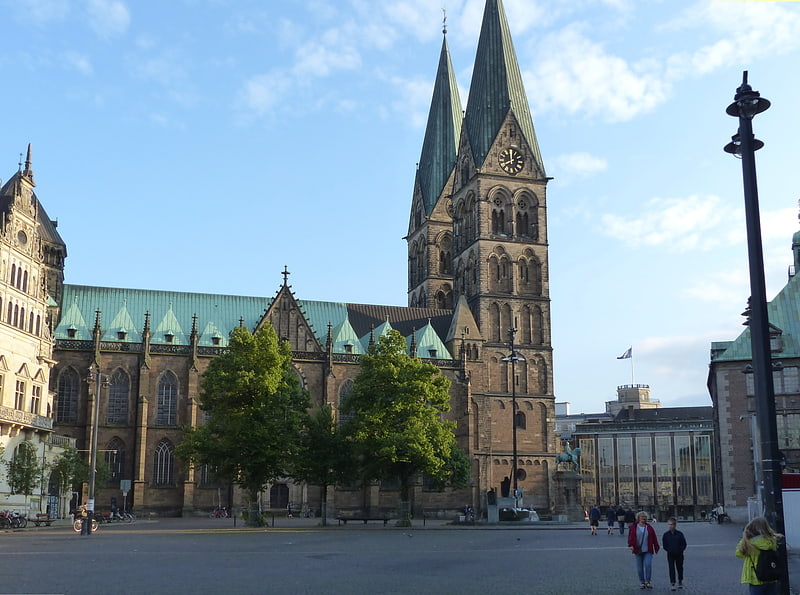
Also known as: Bremer Dom
Tower-topped Romanesque cathedral. Bremen Cathedral, dedicated to St. Peter, is a church situated in the market square in the center of Bremen. The cathedral belongs to the Bremian Evangelical Church, a member of the Protestant umbrella organization named Evangelical Church in Germany. It is the previous cathedral of the former Prince-Archbishopric of Bremen. Since 1973, it is protected by the monument protection act.[3]
Address: Sandstr. 10, 28195 Bremen (Mitte)
Valentin submarine pens
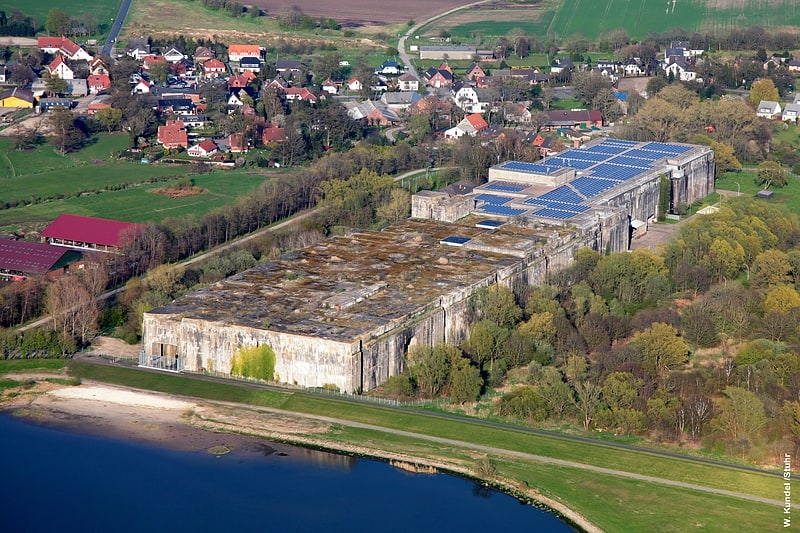
Also known as: U-Boot-Bunker Valentin
Nazi submarine bunker and wartime monument. The Valentin submarine factory is a protective shelter on the Weser River at the Bremen suburb of Rekum, built to protect German U-boats during World War II. The factory was under construction from 1943 to March 1945 using forced labour, but was damaged by air-raids and unfinished by the end of the war. The Valentin factory was the largest fortified U-boat facility in Germany, and was second only to those built at Brest in France.
As a manufacturing facility, it differed from conventional U-boat pens, which were designed to house and service operational U-boats.[4]
Address: Rekumer Siel 1, 28777 Bremen (Blumenthal)
Rhododendron-Park Bremen
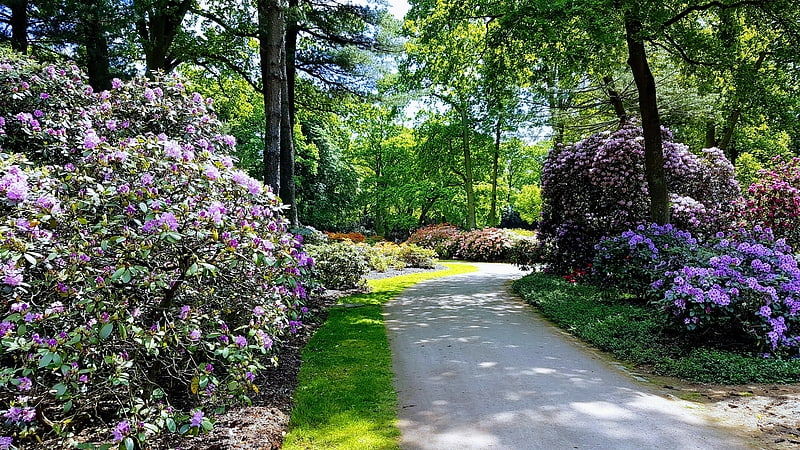
State park in Bremen, Germany. The Rhododendron-Park Bremen, also known as the Rhododendron-Park und Botanischer Garten Bremen, is a major collection of rhododendrons and azaleas, as well as a substantial botanical garden, located in Bremen, Germany. It is open daily; park admission is free but a fee is charged for the nature center Botanika.
The botanical garden dates to 1905 when it was created by businessman Franz Schütte at a different site (1905 Osterdeich, 3 hectares). This original garden was organized geographically, with plants from the Orient, Mexico, and the Caucasus, as well as collections of crop plants, medicinal herbs, native plants, and poisonous plants. It remained privately held until 1935 when it became city property, and was transferred to its current location within the Rhododendron Park over the next few years. Today's garden was completed in 1949-1950.
The park itself began in 1933 at the initiative of the German Rhododendron Society on former farmland and forest, opening to the public in 1937. Its Botanika facility, described as Germany's largest nature center, opened in 2003. In 2007 ownership of the park was transferred to a nonprofit foundation.[5]
Address: Deliusweg 40, 28359 Bremen (Vahr)
Market
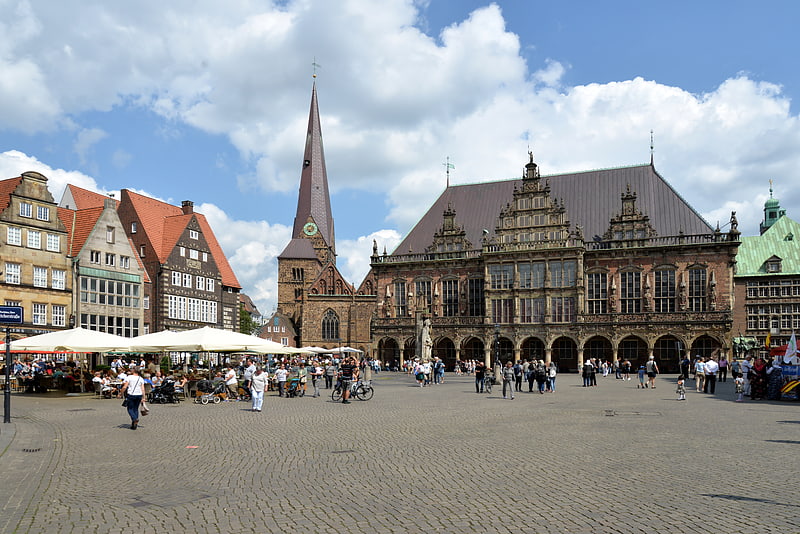
Also known as: Bremer Marktplatz
Historical landmark in Bremen, Germany. The Bremer Marktplatz is a square situated in the centre of the Hanseatic City of Bremen. One of the oldest public squares in the city, it covers an area of 3,484 m2. It is no longer used as a market place except for the Christmas market and the annual Freimarkt Fair at the end of October.[6]
Kunsthalle Bremen
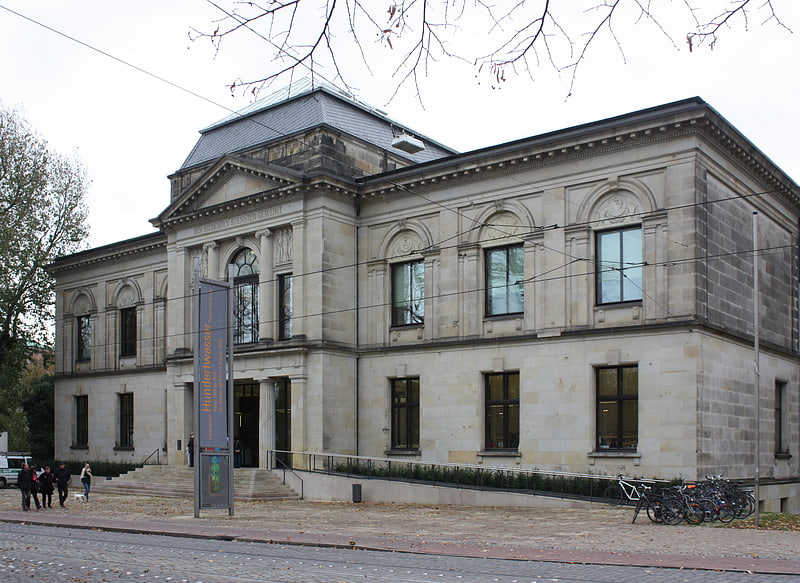
Gallery displaying European artworks. The Kunsthalle Bremen is an art museum in Bremen, Germany. It is located close to the Bremen Old Town on the "Culture Mile". The Kunsthalle was built in 1849, enlarged in 1902 by architect Eduard Gildemeister, and expanded several more times, most notably in 2011. Since 1977, the building has been designated a Kulturdenkmal on Germany's buildings heritage list.
The museum houses a collection of European paintings from the 14th century to the present day, sculptures from the 16th to 21st centuries and a New Media collection. Among its highlights are French and German paintings from the 19th and 20th century, including important works by Claude Monet, Édouard Manet and Paul Cézanne, along with major paintings by Lovis Corinth, Max Liebermann, Max Beckmann and Paula Modersohn-Becker. The New Media section features works by John Cage, Otto Piene, Peter Campus, Olafur Eliasson, and Nam June Paik. The Department of Prints and Drawings has 220,000 sheets from the 15th to 20th centuries, one of largest collections of its kind in Europe.
The Kunsthalle Bremen is operated by the non-profit Bremen Art Society (German: Kunstverein Bremen), making it the only German museum with an extensive art collection from the 14th to 21st centuries which is still in private ownership.[7]
Address: Am Wall 207, 28195 Bremen (Mitte)
Church of Our Lady

Also known as: Liebfrauenkirche
The Church of Our Lady is an Evangelical Protestant church situated northwest of the Market Square in Bremen, Germany. Like Bremen Cathedral, today's building dates from the 13th century. The brightly coloured stained-glass windows are the work of the French artist Alfred Manessier. In 1973, the church was listed under the monument protection act.[8]
Address: Unser Lieben Frauen Kirchhof 27, 28195 Bremen (Mitte)
Universum Science Center
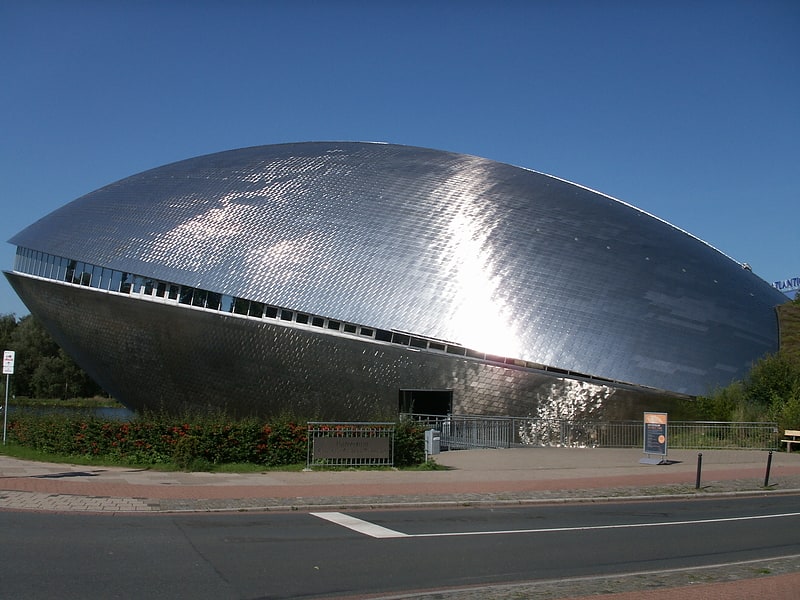
Also known as: Universum Bremen
Interactive exhibits and science shows. The Universum Bremen is a science museum in Bremen, Germany. Visitors are encouraged to interact with most of the approximately 250 exhibits. It receives on average 450,000 visitors annually.[9]
Address: Wiener Straße 1A, 28359 Bremen (Horn-Lehe)
Überseemuseum
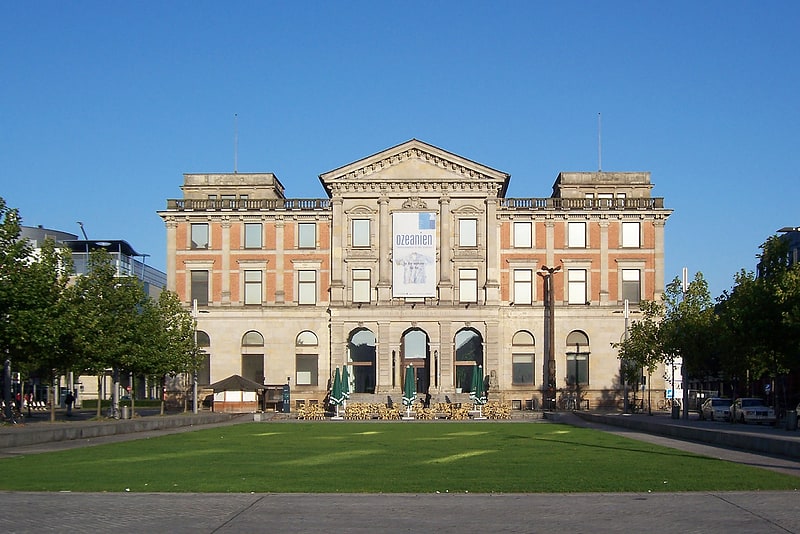
Also known as: Übersee-Museum
Museum in Bremen, Germany. The Overseas Museum in Bremen is a Natural History and ethnographic museum in northern Germany. In an integrated exhibition of Nature, Culture and Trading, the museum presents aspects of overseas regions with permanent exhibitions relating to Asia, South Pacific/Oceania, Americas and Africa. The building is protected by the monument protection act.[10]
Address: Bahnhofspl. 13, 28195 Bremen (Mitte)
Focke-Museum
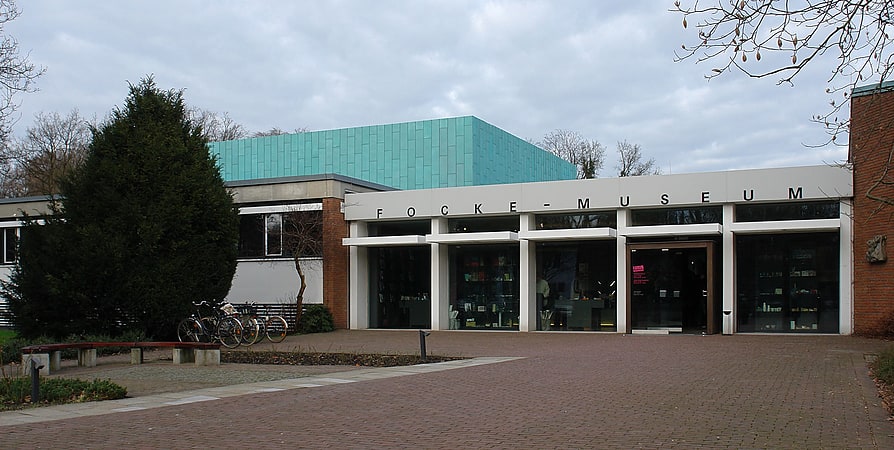
Museum in Bremen, Germany. The Focke Museum is the museum of history and the history of art for the city and state of Bremen. It was formed in 1924 by the merger of a museum of industry and commerce and the previous historical museum, and is named for the founder of the latter, Johann Focke, a Bremen privy councillor and father of Henrich Focke. It is located in 4.5 hectares of grounds in the Riensberg neighbourhood of the city. In addition to a main building which opened in 1964 and was extended in 2002, the museum complex includes buildings dating from the 16th to the 19th centuries.[11]
Address: Schwachhauser Heerstraße 240, 28213 Bremen (Schwachhausen)
Am Wall Windmill

Also known as: Herdentorswallmühle
The Am Wall Windmill is an important and iconic building in Bremen, Germany. This 1898 building is open to visitors and it is home to a restaurant.[12]
Address: Am Wall 212, 28195 Bremen (Mitte)
Olbers-Planetarium

Planetarium in Bremen, Germany. The Olbers-Planetarium is located in the Free Hanseatic City of Bremen, Germany, recording about 29.000 visitors a year. It was named after Heinrich Wilhelm Olbers, a doctor and astronomer from Bremen.[13]
Address: Werderstraße 73, 28199 Bremen (Neustadt)
Landgericht Bremen
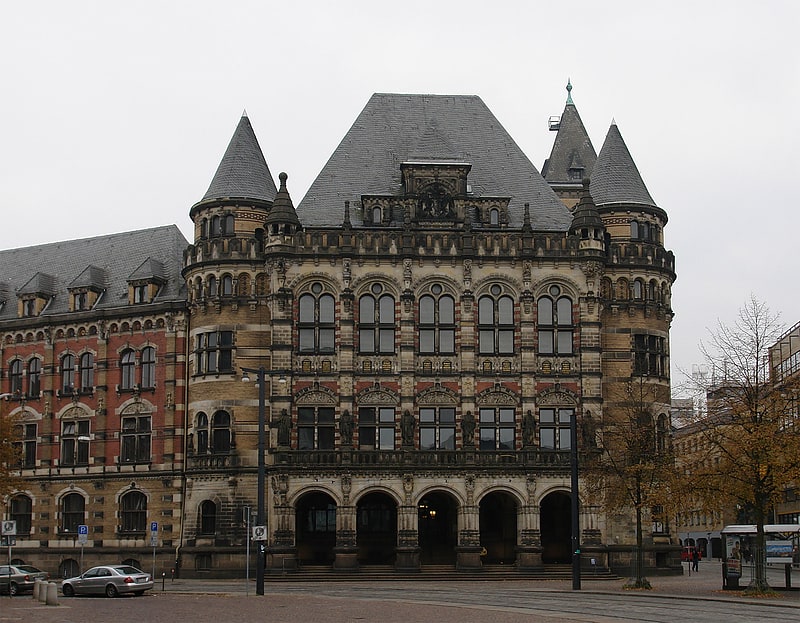
The Landgericht Bremen in the courthouse of the State of Bremen on the Domsheide in the old town of Bremen, Germany. It was built in the late 19th century in the French Renaissance style and completed in 1906. It has been a listed building since 1992. In addition to the judicial services of the regional court, the building houses sections of the Public Prosecutor's department and of the district court.[14]
Address: Domsheide 16, Bremen (Mitte)
Die Glocke
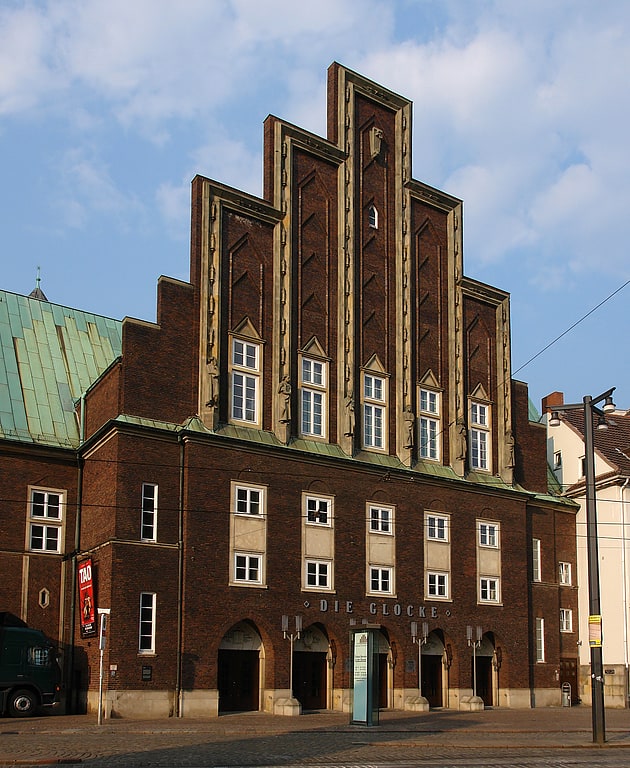
Concert hall in Bremen, Germany. Die Glocke is a concert hall in the centre of Bremen, Germany. Standing on the site of a building from the Middle Ages, it was designed by Walter Görig and completed in 1928. Its elegant Art Deco design and excellent acoustics have been praised by a number of artists including Herbert von Karajan.[15]
Address: Domsheide 4/5, 28195 Bremen (Mitte)
Town Musicians of Bremen
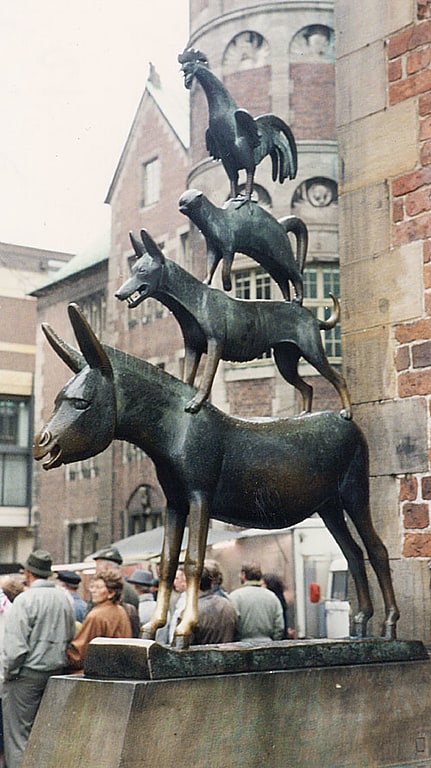
Also known as: Die Bremer Stadtmusikanten
The "Town Musicians of Bremen" is a popular German fairy tale collected by the Brothers Grimm and published in Grimms' Fairy Tales in 1819.
It tells the story of four aging domestic animals, who after a lifetime of hard work are neglected and mistreated by their former masters. Eventually, they decide to run away and become town musicians in the city of Bremen. Contrary to the story's title the characters never arrive in Bremen, as they succeed in tricking and scaring off a band of robbers, capturing their spoils, and moving into their house. It is a story of Aarne–Thompson Type 130.[16]
Address: Schoppensteel 1, 28195 Bremen (Mitte)
St. John's Church
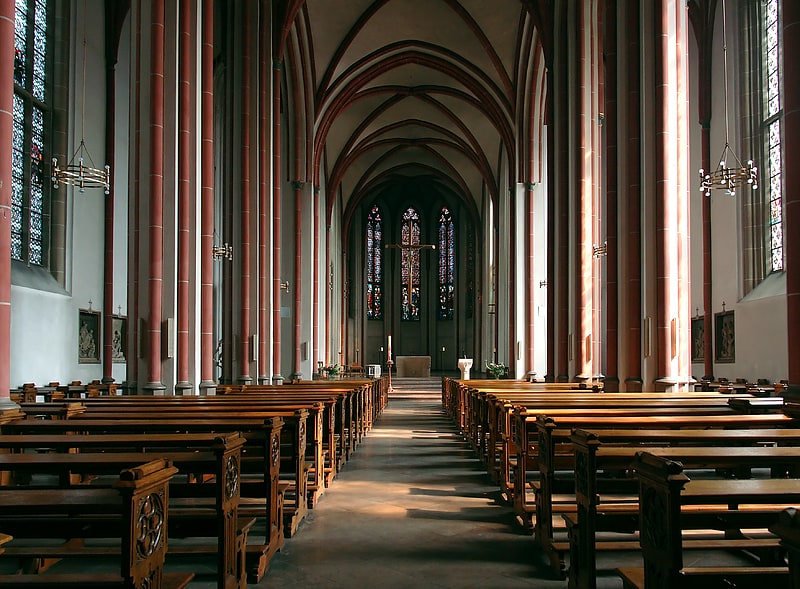
Also known as: St. Johann
Church in Bremen, Germany. St. John's Church is a Roman Catholic provost church in Bremen. It was built in the fourteenth century as a Franciscan abbey church and has been a listed monument since 1973.[17]
Address: Klosterkirchenstr. 3, 28195 Bremen (Mitte)
Saint Martin's Church
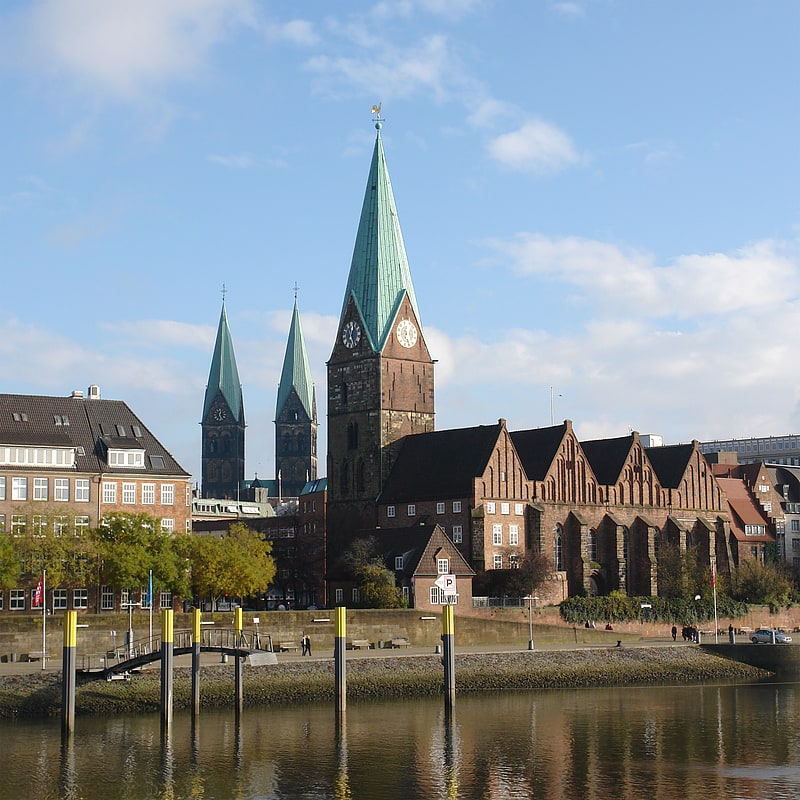
Also known as: St. Martini
Evangelical church in Bremen, Germany. The St. Martin's Church is a Protestant Lutheran church in the old town of Bremen. It is located near the Weser river and is one of the oldest churches in the city.[18]
Address: Martinikirchhof 3, 28195 Bremen (Mitte)
Ludwig Roselius Museum
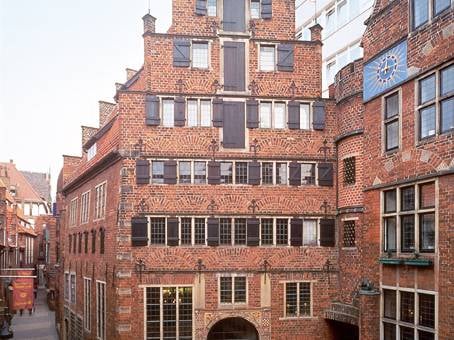
Museum. The Ludwig Roselius Museum on Böttcherstraße in the old town of Bremen, Germany, houses the private collection of the successful coffee merchant Ludwig Roselius. Artefacts from the Middle Ages to the Baroque period are on display. The house itself which was completed in 1588 has a history going back to the 14th century.[19]
Address: Böttcherstraße 6-10, Bremen (Mitte)
Domshof
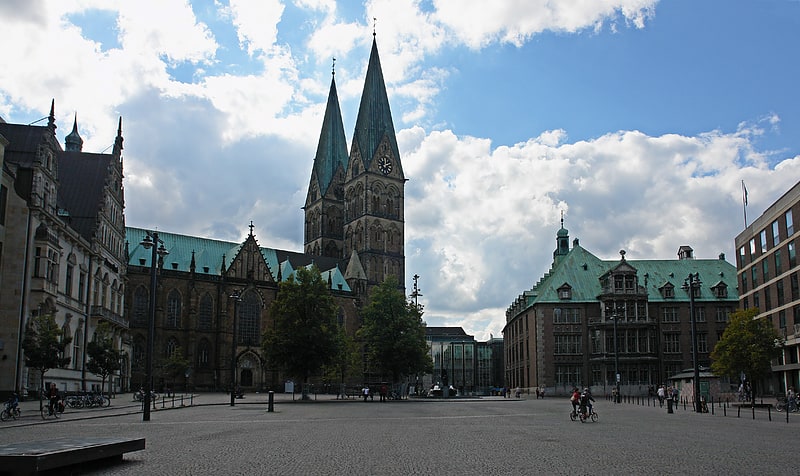
The Domshof is a town square in Bremen, north of the cathedral and the Marktplatz. The Domshof is used for markets as well as larger outdoor events, particularly May Day demonstrations.
The Domshof is a trapezoid 67 m (220 ft) in width, 100 m (330 ft) long on the western side and 130 m (430 ft) long on the eastern side. Several streets radiate off the square (Schüsselkorb, Violenstraße, Seemannstraße, Sandstraße, Unser-Lieben-Frauen-Kirchhof and the Dompassage). Buildings on the square include Bremen Cathedral, the Town Hall of Bremen, Bremen Landesbank, the Deutsche Bank am Domshof, SEB Bank (formerly BfG), the Schifffahrtsbank and the Bremer Bank.
The buildings around the Domshof are relatively uniform in construction, being made of sandstone (e.g. Bremer Bank) and dark red or clinker brick (e.g. the town hall and the Landesbank). The red Maintal sandstone of the Deutsche Bank and a white rendered building (Number 11) differ from the others.[20]
Schlachte
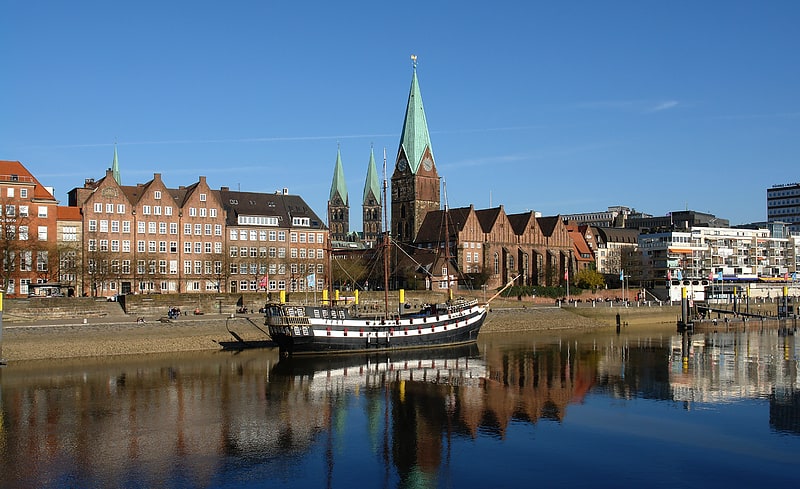
The Schlachte is a promenade along the east bank of the River Weser in the old town of Bremen in the north of Germany. Once one of the city's harbours, it is now popular for its restaurants, beer gardens and river boats.[21]
Address: Schlachte 10, Bremen (Mitte)
Unser Lieben Frauen Kirchhof
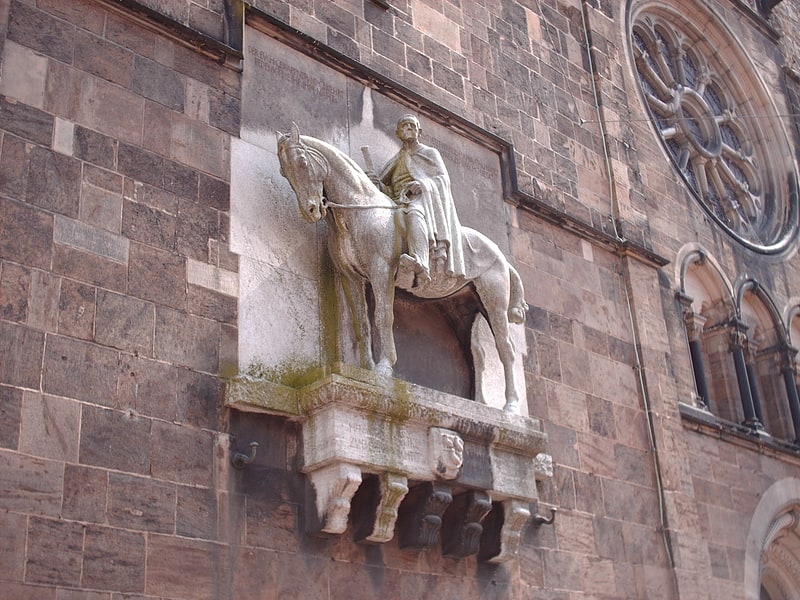
Church in Bremen, Germany. Unser Lieben Frauen Kirchhof is a central square in Bremen between the Bremer Marktplatz, Obernstraße, Sögestraße and the Domshof. The square is used as a flower market. The appearance of the square is quite consistent: sandstone, dark brick and clinker brick.[22]
Shipper's House in Bremen
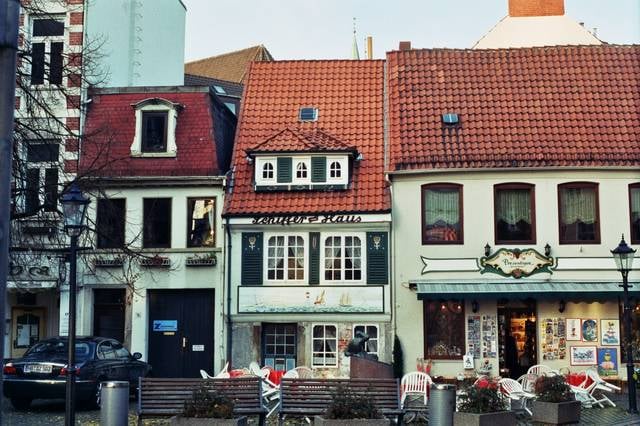
Also known as: Schifferhaus
Building. The Shipper's House in Bremen, Germany is a building in the oldest district of the Free Hanseatic city of Bremen. The house was registered as an historical monument in 1973 and is in Schnoor. During the last 25 years of the 20th century the house was a private museum. It was an attraction for many visitors including the former German Foreign Minister Hans-Dietrich Genscher.[23]
Address: 15 Stavendamm, Bremen (Mitte)
Bismarck monument

Also known as: Bismarck-Denkmal
Sculpture by Adolf von Hildebrand. The Bismarck monument outside the cathedral in Bremen is a bronze figure of the former Chancellor, riding a horse. It was created in 1910, twelve years after Bismarck's death. The commission was entrusted to Adolf von Hildebrand in 1904. Since 1973 the monument has enjoyed protected status.[24]
St Catherine's Monastery
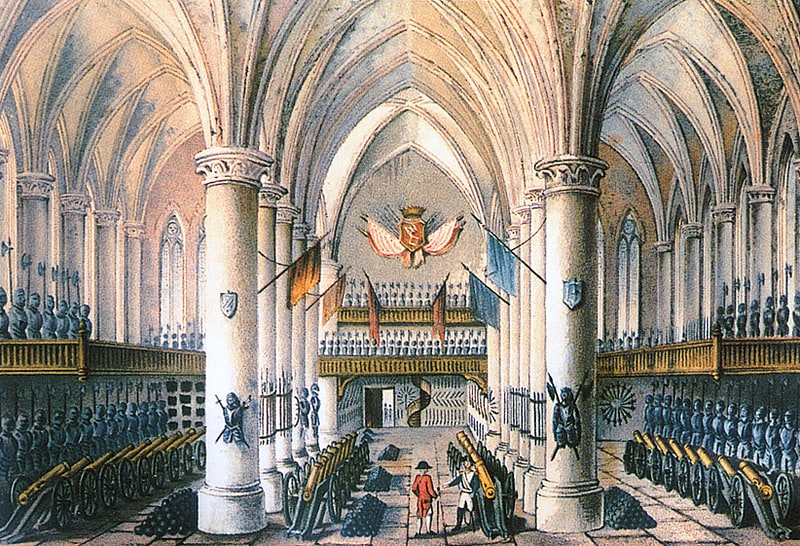
Also known as: St.-Katharinen-Kloster
Monastery. St Catherine's Monastery in Bremen, Germany, was founded in 1253 by the Dominicans. Today traces of its existence remain in the area of the Katharinenstraße and Katharinenklosterhof in the old town.[25]
Address: Katharinenstraße 12-14, Bremen (Mitte)
Heineken House
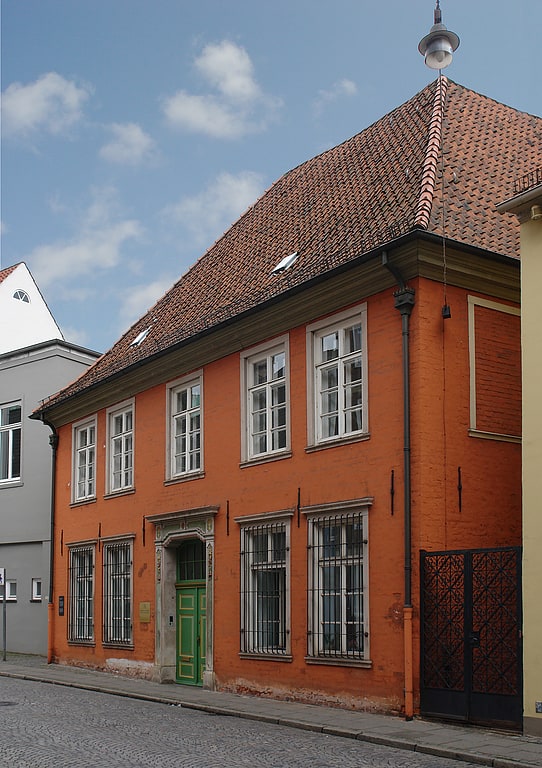
Also known as: Haus Heineken
Building. The Heineken House is a historic building in Bremen, Germany. The house has Bremen's oldest painted wooden ceiling. The building's exterior dates from the 18th century but its core is medieval.[26]
Paula Modersohn-Becker Museum
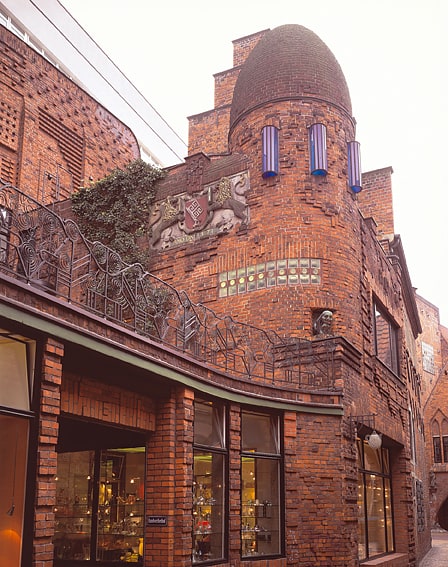
Collection of noted expressionist art. The Paula Modersohn-Becker Museum in Bremen, Germany, is the first museum in the world devoted to a female artist. Modersohn-Becker was one of the most important early Expressionists, and the museum features key works from each of her creative periods.[27]
Address: Böttcherstraße 6-10, 28195 Bremen (Mitte)
Wilhelm-Wagenfeld-Haus
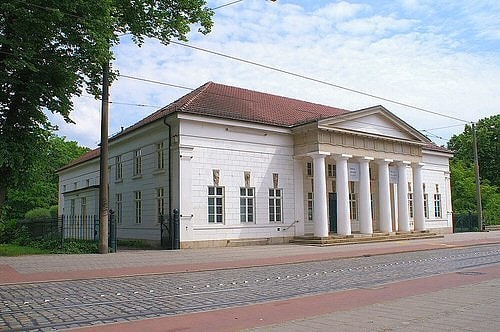
Museum in Bremen, Germany. Wilhelm Wagenfeld House is a design museum and exhibition centre in Bremen, Germany. Completed in the Neoclassical style in 1828, the building now carries the name of Bremen-born Wilhelm Wagenfeld, a major contributor to the 20th-century design of household objects. In addition to a collection of Wagenfeld's creations, the building hosts temporary design exhibitions. It is located in Bremen's Old Town close to the Kunsthalle Bremen art museum.[28]
Address: Am Wall 209, 28195 Bremen (Mitte)
Stadtwaldsee
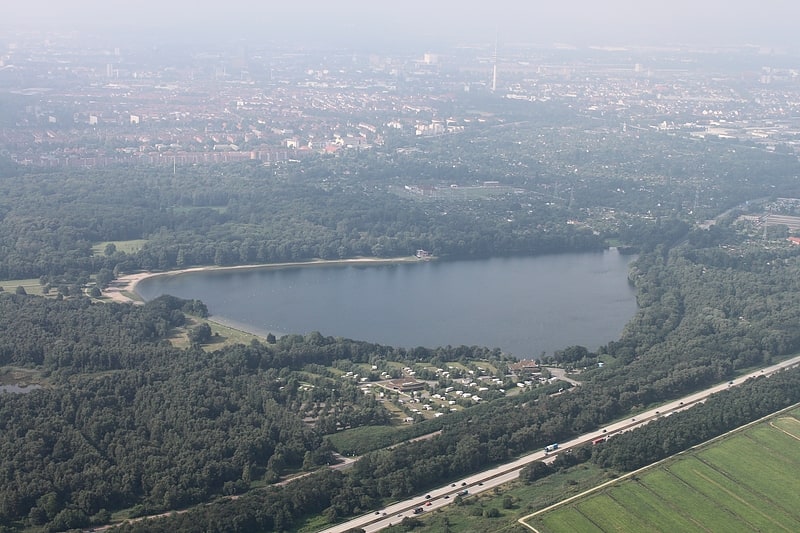
Lake in Germany. The Stadtwaldsee is an excavation lake in Bremen, Germany. It is commonly known as the Unisee due to its proximity to Bremen University. At an elevation of 1 m, its surface area is 28.2 ha.[29]
Theater am Goetheplatz

Theater in Bremen, Germany. The Theater am Goetheplatz, also incorrectly known as the Goethetheater, is the main theatre of the city of Bremen in the north of Germany, the main venue of Theater Bremen. Completed in 1913 in the Neoclassical style, it is located in the cultural district to the east of the old town. After reconstruction with major extensions after the Second World War, it was fully modernized in 2004. Since 2005, it has been a listed building.[30]
Address: Goetheplatz 1-3, 28203 Bremen (Mitte)
Schulschiff Deutschland
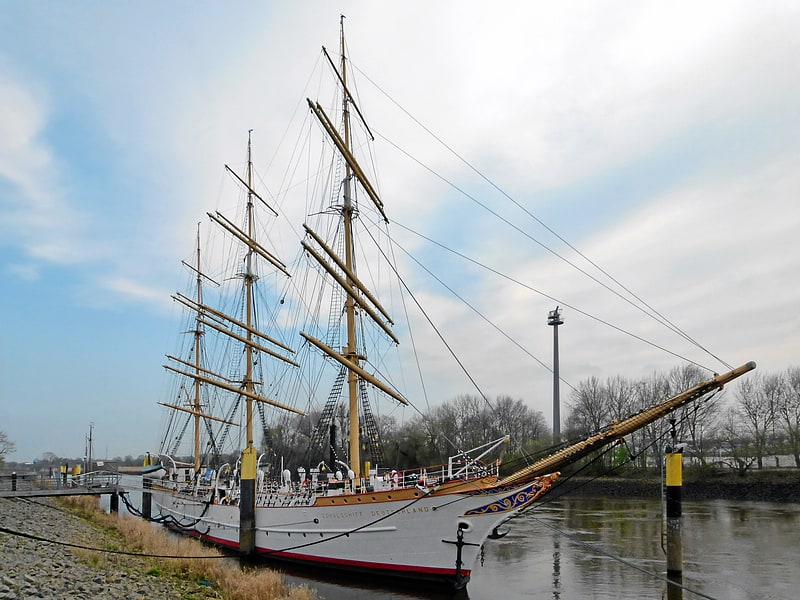
Maritime history on a merchant ship. Schulschiff Deutschland is a German full-rigged sail training ship, maintained as a historical monument and museum ship. She was employed as a school ship for the merchant marine beginning in 1927. The ship is moored at Vegesack, in the Federal State of Bremen, Germany. Since the name Deutschland was at the time of its construction already assigned to an unbuilt naval warship, its official name is Schulschiff Deutschland.
The ship carries 25 sails with a total sail area of 1950 square meters.
The top speed on engine is 12 knots, and on sail 18.2 knots.[31]
Address: Zum Alten Speicher 15, 28759 Bremen (Vegesack)
Kuhgrabensee
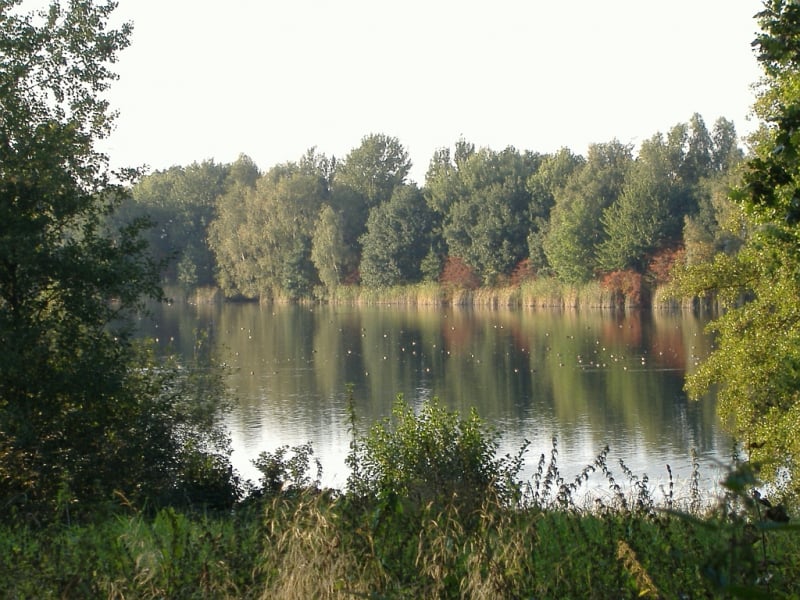
Lake in Germany. Kuhgrabensee is a lake entirely in the southeast of the Bremen district of Blockland. The lake has a surface area of approximately 17.8 hectares and a maximum depth of 16 meters with an average depth of 13 meters.
The Kuhgrabensee was excavated from 1970 to 1972 during the construction of the A27. Since July 1987 within his bank area is a 29.6-acre nature reserve. In 1998 to 1999 it was extended in the context of environmental compensation measure an approximately 4 acre flat water surface. The lake is groundwater-fed and has the influence of the salt dome Lilienthaler a high salt content. From the water quality of her Kuhgrabensee is mesotrophic.
The lake is entered in the EU as a European bird sanctuary. The lake offers habitat to many pioneer plants, dragonflies and amphibians. The Kuhgrabensee is the breeding ground of many birds, such as the great crested grebe.[32]
Spitzen Gebel
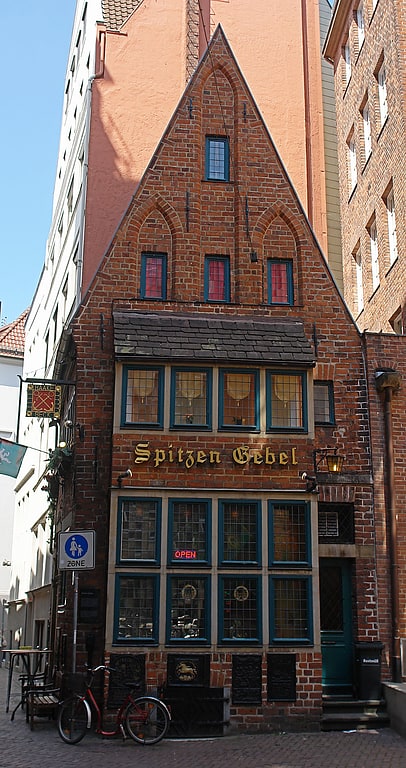
Pub in Bremen, Germany. Spitzen Gebel is a historic building in the centre of Bremen, Germany, located at No. 1, Hinter dem Schütting. Its origins date to the year 1400, but it was rebuilt in the Gothic style in 1590 with additions in 1610. Since 1973, it has been a listed building.[33]
Address: Hinter dem Schütting 1, 28195 Bremen (Mitte)
Friedenstunnel

Tunnel in Bremen, Germany. The Friedenstunnel, formerly named the Rembertitunnel, is an underpass in Bremen's Schwachhausen district that runs below the Wanne-Eickel-Hamburg and Wunstorf-Bremen railway lines. It connects the Parkallee with the Rembertistrasse to the south. The underpass was renamed on 6 September 2015 with the inauguration of the Peace Tunnel project. The project's aim is to communicate a message of peaceful coexistence between religions and cultures, through the artwork and texts displayed in the tunnel and activities and events promoting tolerance and understanding. The Peace Tunnel is intended to symbolize the cosmopolitan nature of the city of Bremen.[34]
Weserburg

Museum in Bremen, Germany. The Weserburg is a modern art museum in Bremen, Germany. Opened in 1991, it is located on the Teerhof peninsula next to the River Weser in an old factory building which was almost completely destroyed in the Second World War. Originally known as "New Museum Weserburg Bremen", it was Europe's first "collectors' museum", in that it conserves no permanent collection but mounts changing exhibition of private collections. It is one of the largest modern art museum spaces in Germany.[35]
Address: Teerhof 20, 28199 Bremen (Neustadt)